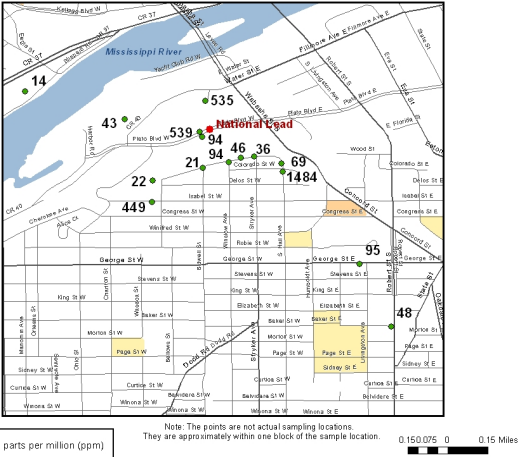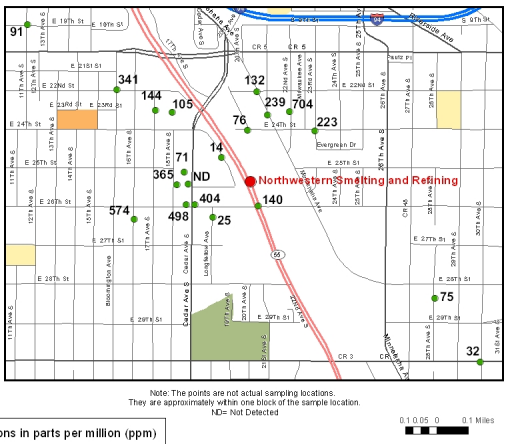- We need to finish surveying. What's the plan?
- Haley and Sandra
- Marisa and Melody
- I have written up the final
project details. More (minor modification) to
come, but this is the basic outline, so that you may
get started.
- Reminder that you have homework due today and Wednesday.
- For today:
Moran's I calculations for Newport
- For Wednesday: Finish the data set of physical locations
and estimated lead levels for the Newport Foundry location.
Please submit these in electronic as well as paper form.
Use the Grace/Sandra method of weighted averages, if you wish, or create a method of your own (although indicate why you think it superior to the Grace/Sandra method).
We'll continue talking about estimating lead levels today.
I have printed out a few pages from an old report, from 1912, on lead poisoning in various places (including Newport) and industries (especially potteries). I thought that I would share this so that you could gauge the importance of this problem, and problems like it.
- For today:
From these locations and samples, we seek to estimate at neighboring locations. How should one do this? This is the fundamental question which we wish to consider.
- We need to get physical coordinates for the lead data in the vicinity of the smelter (Newport Foundry Inc) from the EPA study. (Why is the "1 inch = approximately 25 feet" a bad idea on this map?) We need to estimate corresponding lead levels at each location.
- We need to get physical coordinates for the lead data in the Newport vicinity of the smelter from the USA Today study. We need to estimate corresponding lead levels at each location.
- We can construct a soil lead profile, based on the tests at different soil levels.
- We can construct distributions of lead levels in different ways (by soil depth, say, and for Newport as a whole).
- Finally we need to consolidate this into a summary report. You will either report on this problem or on the survey results for your final project.
- The USA Today website has some limited data which we can use for the Newport area (via their "dig deeper" link).
- The Superfund Final
Report (KY EPA), which examined lead levels specifically around the
smelter (Newport Foundry) is what we are currently examining.
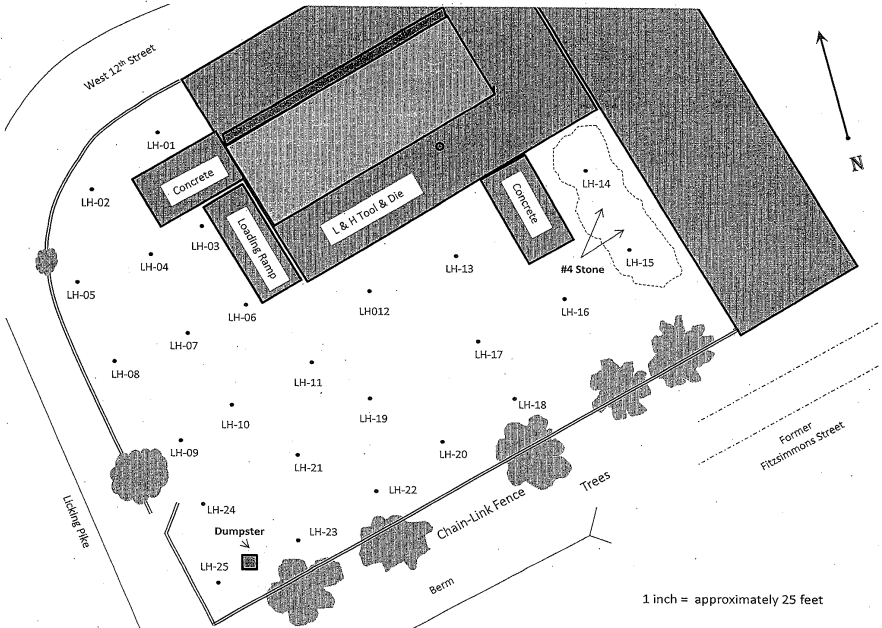
Last time we began using a grid to get coordinates for data locations we have. Try to check with your classmates, to make sure that you're getting consistent results.
We'll need to get coordinates for the USA Today study, too, so let's get some reference points for that one, too, before we go on.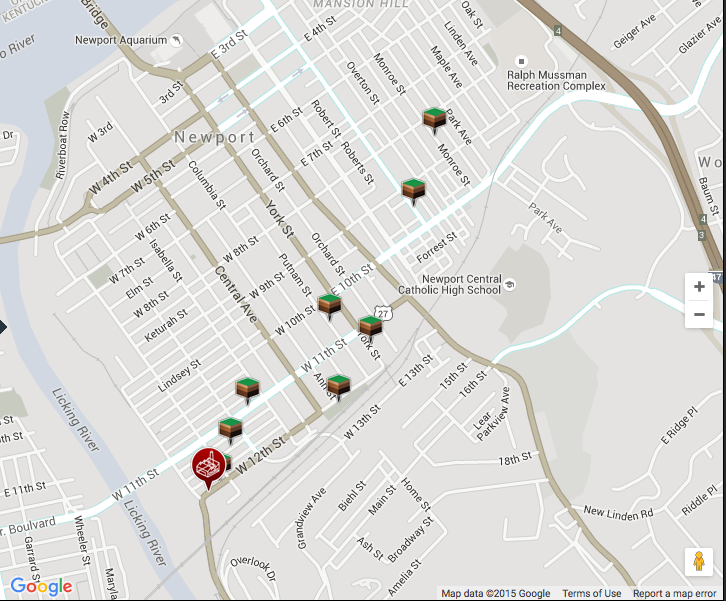
We're using the KY EPA lead data to
- map the yard around the former smelter, and determine a "lead load" in the immediate vicinity of the smelter, and to
- get a "soil lead profile" -- since we have multiple lead levels at
each site. So let's talk about this one today. It will help us to get
an answer to the previous problem.
Last time we were talking about this problem. How do we generate the soil lead values for the sites we've identified? I suggested a method for getting started: the idea was that we were going to put all our samples together into one, to get an idea of how soil lead level changes with depth. We have an idea of what to expect.
Let's think of a simple example, and see how it would work: three samples, as follows:
- Sample 1:
- 0-1: 49
- 1-2: 23
- 2-3: 17
- Sample 2:
- 0-1.5: 123
- 1.5-2.5: 90
- 3-4: 47
- Sample 3:
- 0-1: 220
- 1-3: 71
I'll now have you record the data in this way, using your sheet from the KY EPA. Take out your data sheet: we're going to mark it up.
In the end, we'll get results that look like these. Let's take a look at my work.
To do:
- Can you verify my work in that result file?
- Can you think of a better way to represent the data?
- Now: how would you estimate the lead value at each site, perhaps including this analysis? As Kensey said last time, "So there's no right answer...." -- and she is correct! There's no right answer -- there are only reasonable answers, and we could then debate how reasonable each is!
- Sample 1:
- I did a search of lead pollution
patterns, and found
this interesting study and the associated graphic:
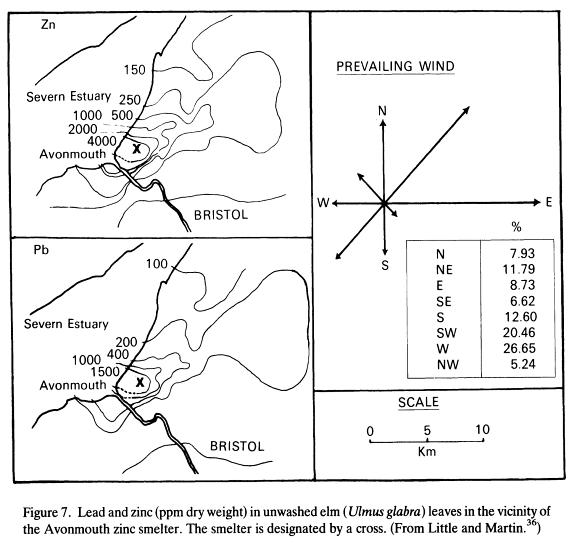
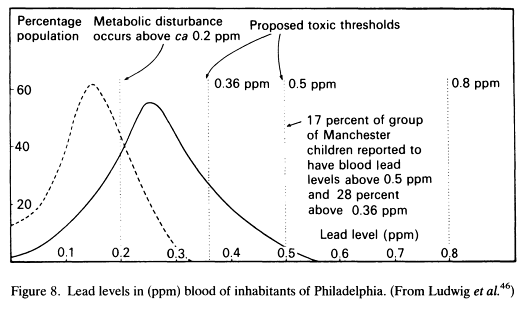
The dashed curve is suburban males; the solid curve is urban males.
- I also did a little further study of the USAToday report. There
were smelters nearby in Cincinnati, upwind from Newport. They, too,
could have contributed to Newport's lead load.
- USAToday report tipped me off
- to this site in Cincinnati (by the way, Certified Metals also owned the Newport Foundry site at one time).
- It is important that we determine prevailing winds for Newport.
